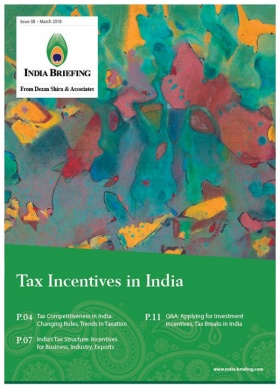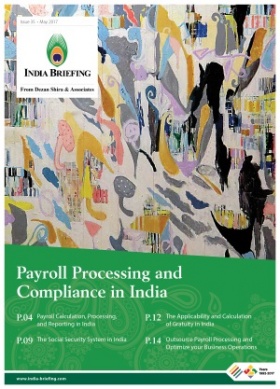The Applicability and Calculation of Gratuity in India
Gratuity is a lump sum that a company pays when an employee leaves an organization, and is one of the many retirement benefits offered by a company to an employee.
In India, gratuity rules and requirements are set out under the Payment of Gratuity Act, 1972. An employer may also choose to pay gratuity outside of that which is required by this Act.
The Payment of Gratuity (Amendment) Act, 2018 enables the government to raise the limit of tax-free gratuity. The change can be made through an executive order by the prime minister.
On February 1, 2019, India’s interim budget hiked the tax-free gratuity limit from Rs 20 lakh (US$27,904) to Rs 30 lakh (US$41,856). The government had doubled the tax free gratuity to Rs 20 lakh (US$27,904) in March, 2018.
In this article, we discuss India’s gratuity rules in terms of:
- Applicability;
- Calculation;
- Tax exemption;
- Payment; and
- Forfeiture.
Applicability
The Payment of Gratuity Act, 1972 (the Gratuity Act) is applicable to employees engaged in factories, mines, oilfields, plantations, ports, railway companies, shops or other establishments with ten or more employees. The full official text of the Gratuity Act can be found here. Gratuity is fully paid by the employer, and no part comes from an employee’s salary.
To be eligible for gratuity under the Gratuity Act, an employee needs to have at least five full years of service with the current employer, except in the event that an employee passes away or is rendered disabled due to accident or illness, in which case gratuity must be paid.
Gratuity is paid when an employee:
- Is eligible for superannuation;
- Retires;
- Resigns; or
- Passes away or is rendered disabled due to accident or illness (if an employee passes away, gratuity will be paid to the employee’s nominee).
Gratuity Calculation Formula
Gratuity in India is calculated using the formula:
Gratuity = Last Drawn Salary × 15/26 × No. of Years of Service
Notes:
- The ratio 15/26 represents 15 days out of 26 working days in a month.
- Last drawn salary = Basic Salary + Dearness Allowance.
- Years of Service are rounded down to the nearest full year. For example, if the employee has a total service of 20 years, 10 months and 25 days, 21 years will be factored into the calculation.
Tax Exemption
Gratuity received under the Gratuity Act is exempt from taxation to the extent that it does not exceed 15 days’ salary for every completed year of service calculated on the last drawn salary (subject to a maximum of US$41,856 or Rs 30 lakh).
Any other gratuity is exempt to the extent that it does not exceed one half-month salary for each year of completed service calculated on the basis of average salary for 10 immediately preceding months. The upper limit of US$41,856 applies to the aggregate of gratuity received from one or more employers in the same or different years.
India’s income tax department has put out a taxable gratuity calculator, which can be accessed here.
Payment
The employer shall arrange to pay the amount of gratuity within 30 days from the date it is billed to the person to whom the gratuity is allocated.
If the amount of gratuity payable under the section is not paid by the employer within the period specified, he will have to pay simple interest on it from the date on which the gratuity becomes payable at the rate not exceeding the rate stipulated by the federal government.
Gratuity should be paid in cash, or if so desired by the payee, by demand draft or bank check to the eligible employee, nominee, or legal heir.
Forfeiture
The gratuity payable to an employee shall be wholly forfeited if:
- The service of such employee has been terminated for his or her lawless or disorderly conduct or any other act of violence on his or her part; or
- The service of such employee is terminated for any act which constitutes an offense involving moral turpitude, provided that such offense is committed by him or her in the course of his or her employment.
In order to forfeit gratuity of an employee, there must be a termination order containing charges as established to the effect that the employee was guilty of any of the aforesaid misconducts. In one case, it has been held that in the absence of a termination order containing any of the above allegations, the gratuity of an employee cannot be forfeited.
Editor’s Note: This article was originally published on June 4, 2013, and has been updated on February 4, 2019 to include the latest gratuity regulations.
About Us
India Briefing is produced by Dezan Shira & Associates. The firm assists foreign investors throughout Asia from offices across the world, including in Delhi and Mumbai. Readers may write india@dezshira.com for more support on doing business in India.
- Previous Article 印度退休金规则:适用范围与计算
- Next Article Direct Taxes in India Explained










